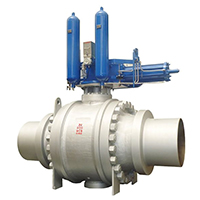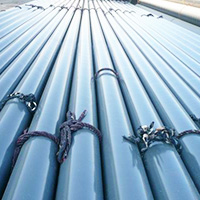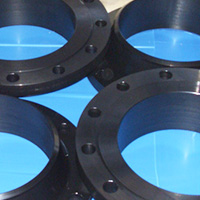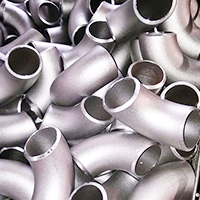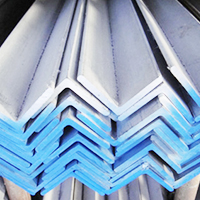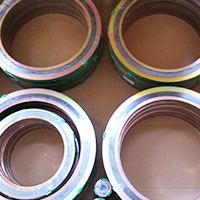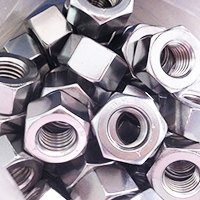The corrosion resistance of stainless steel generally increases with chromium content. The basic principle is that when there is enough chromium in steel, a very thin and dense oxide film forms on the surface of the steel, which prevents further oxidation. Oxidizing environment can strengthen the film, and reducing environment will inevitably destroy the film, resulting in corrosion of steel.
Corrosion Resistance in various environments:
Atmosphere Corrosion
The atmospheric corrosion resistance of stainless steel is basically changed with the content of chloride in the atmosphere.Therefore, proximity to the ocean or other chloride sources is very important for the corrosion of stainless steel. A certain amount of rain is important only if it has an effect on the chloride concentration on the steel surface.
Rural environment 1Cr13, 1Cr17 and Austenitic stainless steels can be adapted to a variety of uses without significant change in appearance. Therefore, stainless steel exposed to use in rural areas can be selected according to the price, market supply, mechanical properties, production and processing properties and appearance.
In industrial environments free of chloride contamination,1Cr17 and Austenitic stainless steels can be operated for long periods of time and remain essentially rust-free. A film may form on the surface, but retain the original shiny appearance when the film is removed. Corrosion of stainless steel will result in the presence of chloride in industrial environments.
Marine stainless steels will form a thin rust film in a short period of time, but will not cause significant dimensional changes, austenitic stainless steels such as 1Cr17Ni7, 1Cr18Ni9 and 0Cr18Ni9, when exposed to the Marine environment, some corrosion may occur.Rust is usually superficial and can be easily removed. Molybdenum-containing stainless steels are essentially corrosion resistant in Marine environments
Fresh Water
The corrosivity of fresh water is affected by pH value, oxygen content and scaling tendency of water. Scale (hard) water. its corrosivity is determined by the amount and type of scale that forms on the metal surface as a result of the minerals and temperature present. Non-scaling (soft) water, which is generally more corrosive than hard water. Corrosion can be reduced by increasing pH or reducing oxygen content.
Stainless steel is significantly more resistant to fresh water corrosion than carbon steel and has excellent characteristics for use in fresh water. This steel is widely used in shipyards and DAMS where high strength and corrosion resistance are required. However, it should be considered that under certain circumstances.1Cr13 May be sensitive to moderate pitting in fresh water. 1Cr17 and Austenitic stainless steels are almost completely resistant to fresh water corrosion at room temperature (ambient temperature).
Acidic Water
Acidic water refers to contaminated natural water from ore and coal leaching and is much more corrosive than natural fresh water because it is highly acidic. Due to the leaching of sulfide contained in ore and coal by water, acidic water usually contains a large amount of free sulfuric acid. In addition, this water contains a large amount of ferric sulfate, which has a very large effect on the corrosion of carbon steel.
Carbon steel equipment corrodes quickly when exposed to acid water. The results of tests on various materials subjected to acid river water show that austenitic stainless steel has higher corrosion resistance in this environment.
Austenitic stainless steel has excellent corrosion resistance in fresh water and acid river water, especially its corrosion film is less obstruction to heat conduction, so stainless steel tubes are widely used in heat exchange purposes.
Salt Water
The characteristic of salt water corrosion is often in the form of pitting corrosion.Stainless steel, largely due to salt water lead to the corrosion resistance of the passivation film local damage. Other causes of pitting of these steels are due to the presence of minamides and other Marine organisms attached to the stainless steel equipment, which can form concentration cells. Once formed, these cells are very active and cause a lot of corrosion and pitting. Corrosion of austenitic stainless steels is usually very small in the case of high speed flow of saline water, such as in pump impellers.
For the condenser using stainless steel tubes, the water flow rate should be more than 1.5m/s, so as to minimize the accumulation of seawater organic matter and other solids in the tube. For the structure of stainless steel equipment for the treatment of salt water, it is best to reduce cracks and use thick wall parts in the design.
Soil
Metals buried in soil are in a complex state of constant change, depending on the weather and other factors. It has been proved that austenitic stainless steel has good corrosion performance on most soils, while 1Cr13 and 1Cr17 have pitting corrosion in many soils. 0Cr17Ni12Mo0 stainless steel can resist pitting corrosion in all soil tests.
Nitric Acid
Ferritic stainless steels and austenitic stainless steels containing no less than 14% chromium have excellent resistance to nitric acid corrosion. 1Cr17 stainless steels have been widely used in processing equipment of nitric acid plants.However,0Cr18Ni9 usually has better formability and welding performance, it has largely replaced 1Cr17 stainless steel in the above uses.
The corrosion resistance of other Austenitic stainless steels is similar to that of 0Cr18Ni9.0Cr17 stainless steels generally have a slightly higher corrosion rate than 0Cr18Ni9, and higher temperatures and concentrations have greater harmful effects.
If the heat treatment of the steel is not appropriate, thermo nitric acid will cause inter granular corrosion of austenitic and ferritic stainless steels. Appropriate heat treatment can prevent corrosion or use corrosion resistant stainless steels.
Sulfuric Acid
Standard stainless steel grades are rarely used in sulphuric acid solutions because of the narrow range of applications. Generally stainless steel is corrosion resistant when sulfuric acid concentration is less than 15%. Or greater than 85%. At higher concentrations, however, carbon steel is usually used. Martensitic and ferritic stainless steels are generally not resistant to sulfuric acid solution corrosion. As in the case of nitric acid, sulfuric acid can cause intergranular corrosion if stainless steel is not properly treated. For welded structures that cannot be heat treated after welding, low-carbon or stainless steel should be used.
Phosphoric Acid
It has effective corrosion resistance at various concentrations up to 107℃. It should be noted that trace impurities of fluoride or chloride salts are sometimes present in phosphoric acid produced by wet processes. The presence of these halides in acids may adversely affect the corrosion resistance of stainless steels. Martensitic and ferritic stainless steels are significantly less resistant to phosphoric acid corrosion than austenitic stainless steels and are therefore generally not used for this acid.
Acetic Acid
Austenitic stainless steels can fully resist the corrosion of various concentrations of acetic acid at room temperature. At higher temperatures,0Cr17Ni12Mo2 and 0Cr19Ni13M03 have better acetic acid corrosion resistance than other Austenitic stainless steels.
Alkali
Stainless steel usually has good corrosion resistance to weak alkali.
Formic Acid
Formic acid can be completely treated with any austenitic stainless steel at room temperature. However, when it is hot formic acid, it can quickly corrode stainless steel that does not contain molybdenum. Formic acid rapidly corrodes martensite and ferritic stainless steels at all temperatures.


- Ball Valve,4” CL600LB, Body :ASTM A105N ;Ball Material:ASTM A105N+STELLITE; End Connect: Flange End; API 6D

- Forged Steel 90 Deg Elbow ASTM A105N, Size 3/4 Inch, Pressure: 6000LBS, SW End, Standard ASME B16.11

